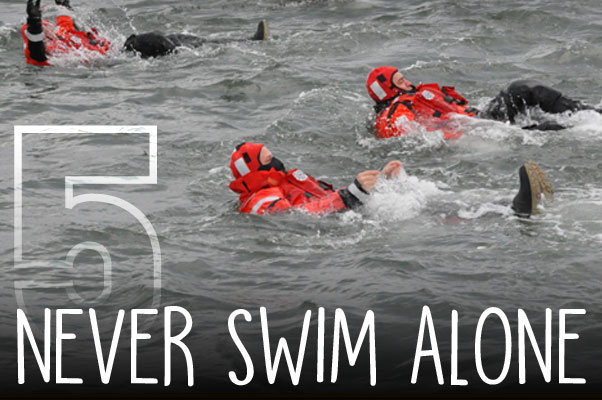Rip currents – often incorrectly dubbed “rip tides” or “undertows” – are strong, narrow currents of water that move quickly away from the shore, especially along the coasts of oceans, seas, large lakes, or wherever there are breaking waves.
When wind and waves push excess water toward the shore, it tends to flow back to the open water via the path of least resistance, creating a rip current. While you can sometimes spot a rip current by its trail of murky, debris-filled, or foamy water, they are often nearly invisible to the untrained eye. Contrary to popular belief, rip currents do not drag people or objects underwater, but carry them directly beyond the zone of breaking waves. They are strongest near the water’s surface, and can move at a speed of 8 feet per second – faster than a Coast Guard rescue swimmer!
Invisibility, power and speed are ingredients for grave danger, and indeed, rip currents pose a serious threat along coastlines nationwide.
In 2017, the National Weather Service reported 113 rip current-related deaths in the United States. Twenty-seven of them occurred in the Mid-Atlantic region.
In order to help reduce those numbers this year, we offer the following rip current tips – rip tips, if you will – to keep you informed and safe when you hit the beaches and waterways.
First of all, you need to know how to help yourself if you get caught in a rip current. Most importantly, don’t panic! Stay as calm as possible to conserve energy and form a plan. If you are a poor swimmer, immediately call for help and wave your arms to alert people on land. If you are capable, swim parallel to the shore to escape the rip current’s pull. Swim in the direction of the nearest breaking waves, which mark the edge of the rip current. If you grow tired, simply float on your back or tread water until the rip current releases you or someone assists you.
If you witness someone else struggling in the water, immediately alert the nearest lifeguard. If a lifeguard is not nearby, call 911 . Throw the distressed swimmer something that floats and shout instructions on how to escape. Be aware that when untrained people jump in to save others, they commonly end up in need of rescue, too. Try to help as much as you can fom land!
The most important decision you can make when planning a summer trip is to choose a lifeguard-protected beach . Not only are lifeguards specially trained to help distressed swimmers, they are a wealth of information. Ask the on-duty lifeguard about water conditions and whether there have been any rip currents reported that day, and heed other warnings and flags posted in the area.
Before you leave home, take the time to check weather and surf condition forecasts. Think longer-term than just an hour or two; stay apprised of conditions before they unfold, and prepare for the unexpected. Visit weather.gov to check the weather and weather.gov/safety/ripcurrent-forecasts to check rip current forecasts. When checking the forecasts, keep in mind that the presence of high winds and low tides can increase the likelihood of rip currents.
When it comes to swimming at the beach or other waterways, the more the merrier. Utilize the buddy system to help keep yourself and your companions safe. Other people can help you if you start to struggle or become distressed in the water. When you go it alone, you are putting yourself at risk!
Share these tips with your friends and family so that everyone can stay safe while enjoying the mid-Atlantic’s many beautiful beaches, lakes and rivers this summer!









